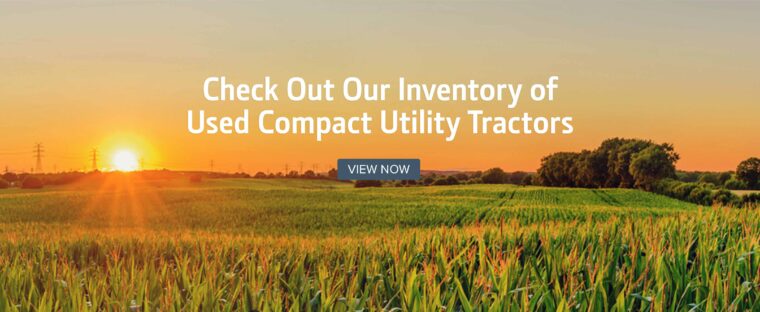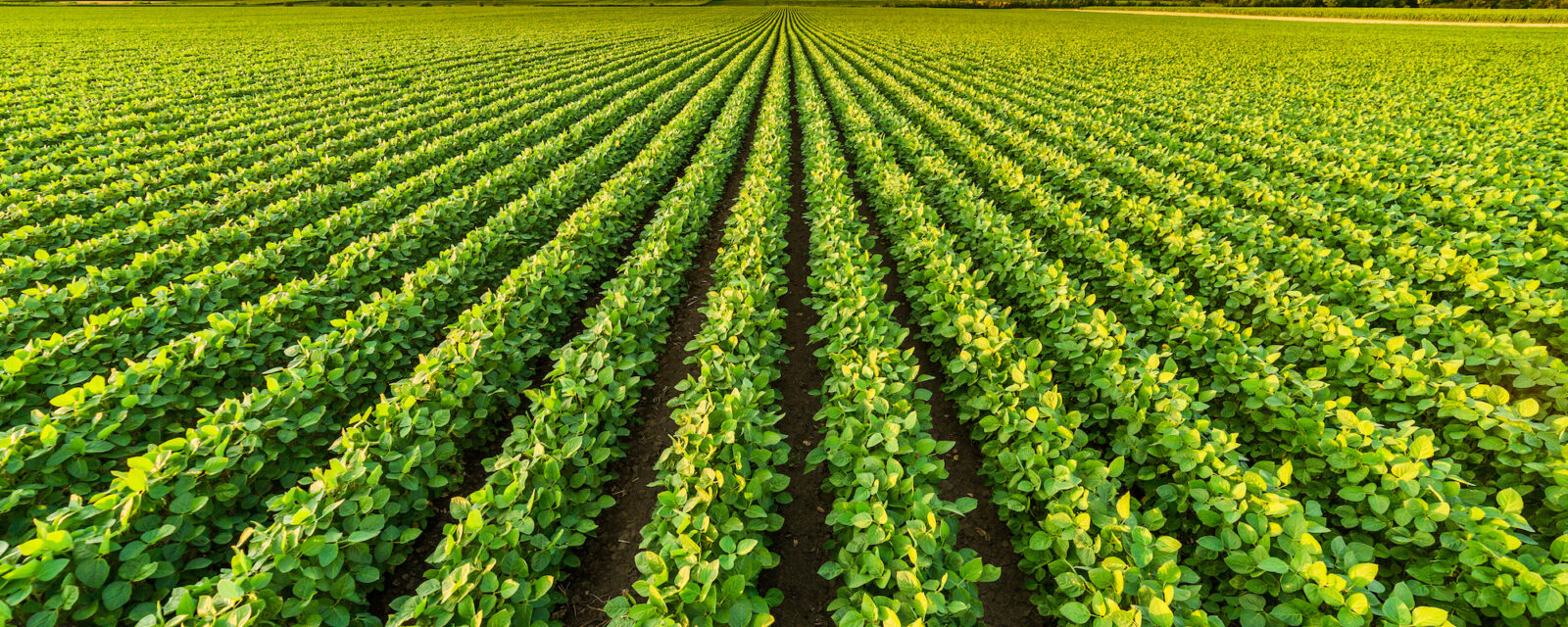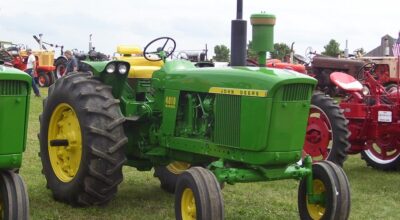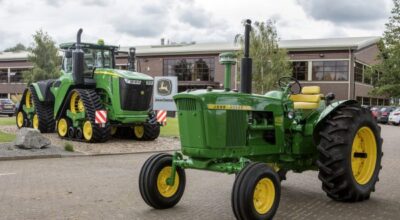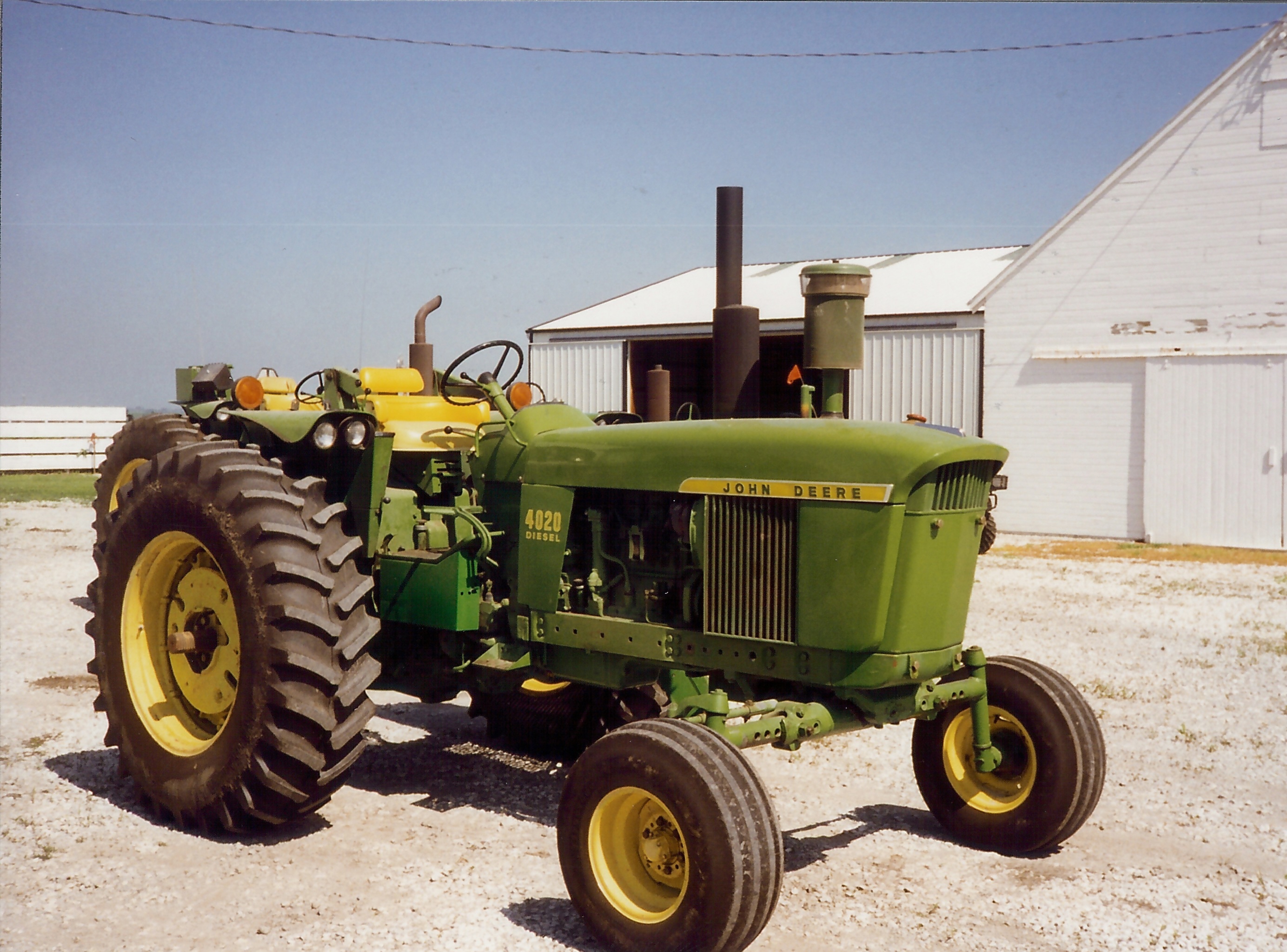Some tractors earn their place in history through power or popularity. Others help shape the future. The John Deere 4010 and 4020 did both. Introduced in the early 1960s as part of the company’s New Generation of Power series, they marked a bold departure from Deere’s two-cylinder legacy and redefined what farmers expected from their equipment.

The 4010 introduced a six-cylinder engine, modern hydraulics, and a cleaner operator layout. A few years later, the 4020 built on that foundation with more horsepower, a stronger frame, and the now-iconic Power Shift transmission. Together, these machines helped move agriculture into a new era. They continue to hold their ground today on farms, in collections, and in the memories of those who ran them.
But how do these two classics compare? And what made each one a standout in its own right? Let’s take a closer look at the John Deere 4010 vs 4020.
John Deere 4010 Overview
The John Deere 4010 arrived in 1960 as a clear step forward in tractor design. With its 6-cylinder engine rated at approximately 80 PTO horsepower, it gave farmers the power boost they needed for a broader range of implements and field conditions. Fuel options included gasoline, diesel, and LP gas, offering flexibility based on location and use.
Besides power, the 4010 improved the overall operator experience with better visibility, upgraded controls, and hydraulic power steering. Adjustable rear axles and a responsive hydraulic system added to its versatility.
Later models like the 4020 would build on its success, but the 4010 was the machine that launched a new era, and it holds a respected place in John Deere history.
John Deere 4020 Overview
When the 4020 entered production in 1963, it brought substantial upgrades that made it even more capable in the field. The engine produced close to 95 PTO horsepower, giving operators the extra muscle to run larger implements or handle heavier jobs with ease. Like the 4010, it was available in diesel, gasoline, and LP gas formats.
Key updates included a stronger rear axle, improved brakes, and the option for a Power Shift transmission. This upgrade allowed operators to shift without clutching, a major benefit for loader work or frequently changing terrain.
Today, the 4020 remains one of the most collected and celebrated models in John Deere’s lineup, valued for both its performance and its longevity.
What Sets the 4010 and 4020 Apart?
The 4010 marked a clear departure from the past. The 4020 refined that formula with changes that made it even more capable and operator-focused.
Operator Station and Controls
The 4010 introduced a more streamlined layout than earlier Deere models. Controls were positioned with efficiency in mind, making the transition to a six-cylinder platform more approachable. The cab was cleaner and easier to work in, especially during long days in the field.
With the 4020, Deere improved that experience by shifting hydraulic levers to the driver’s side and updating the PTO system with cable-operated controls. The optional Power Shift transmission gave operators the ability to change gears on the move, which helped reduce fatigue during high-volume tasks like loader work.
Visibility and Comfort
One of the 4010’s biggest advantages was its visibility. The open platform and improved hood design made it easier to monitor implements and stay lined up on rows. Paired with a better seating position, it gave farmers more control and less strain.
The 4020 made small but noticeable adjustments. A taller seat and refined hood shape opened up the forward view even more. Combined with better cushioning and suspension options, it helped farmers stay comfortable through longer shifts without changing the feel of the tractor.
Rear Axle and Tire Configurations
The 4010 gave farmers new flexibility with adjustable rear wheels and multiple tire options that could be tailored to specific row widths and crop types.
The 4020 expanded that versatility with wider axle options and support for larger tire sizes. It offered a more stable feel under heavier loads and handled better on rougher terrain, which made it especially valuable for growing operations and heavier-duty applications.
Key Differences That Still Matter
These two models are often discussed together, but when side by side, the differences are clear. The 4020’s more advanced features reflect John Deere’s drive to improve on a proven platform:
- The 4020 delivered more horsepower, making it more capable with larger implements
- It introduced the Power Shift transmission, which boosted operator control and convenience
- A stronger hydraulic system and better brakes made it safer and more responsive
- The rear end and axles were beefed up to handle heavier work
The 4010 was the blueprint. The 4020 was the refinement that brought it to full form.
Built to Last, Remembered for a Reason
The 4010 and 4020 met the demands of their era with purpose and vision, combining power, simplicity, and innovation to redefine how farmers worked, planned, and expected their equipment to perform. Decades later, they still represent the kind of progress that leaves a lasting mark on the field.
To explore used row-crop tractors that carry forward the same spirit of durability and innovation, connect with your local John Deere dealer.
